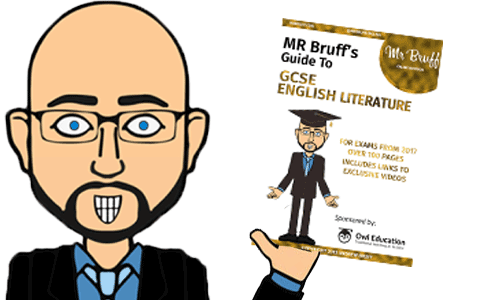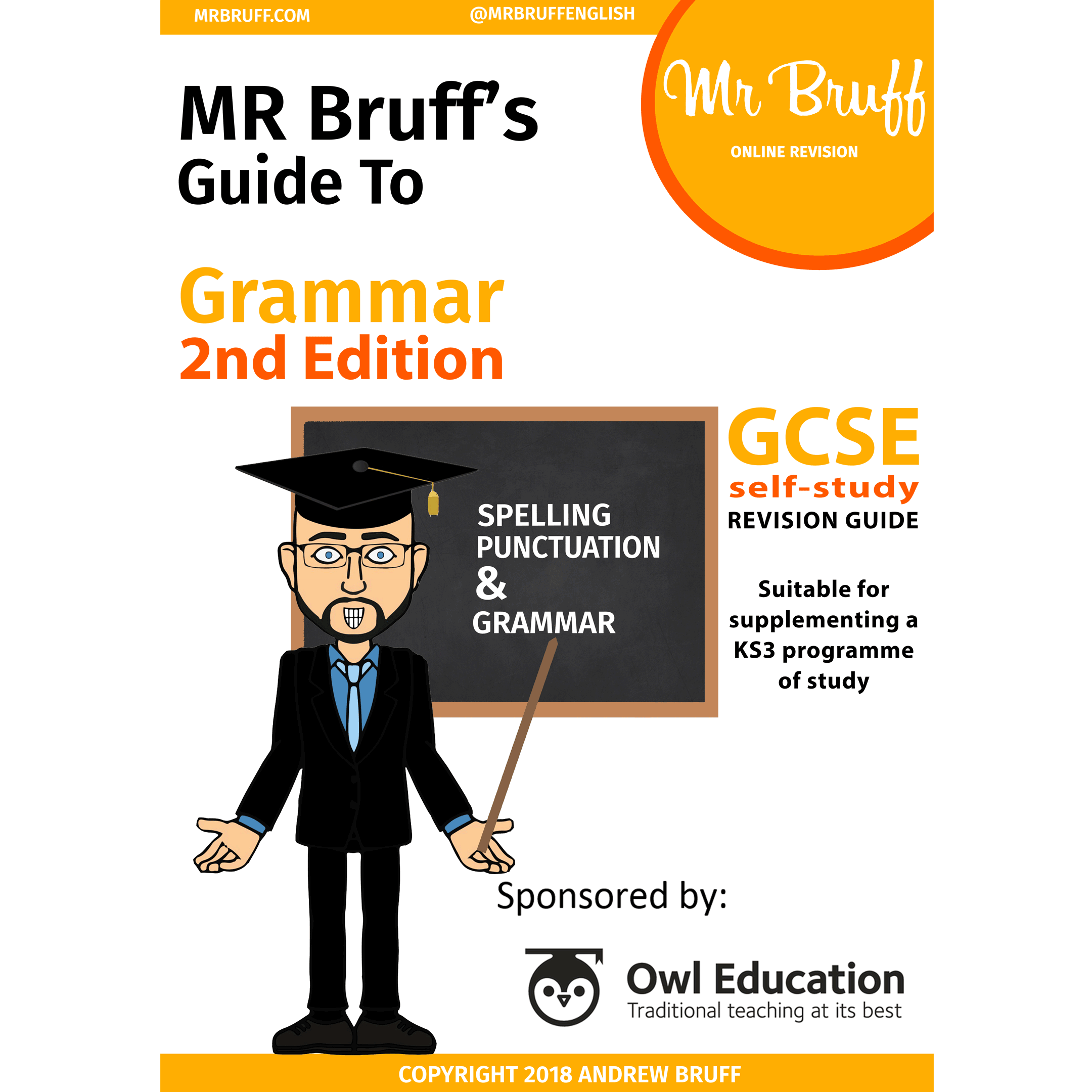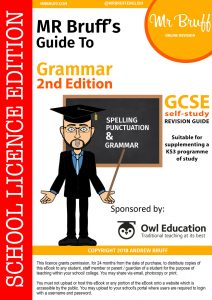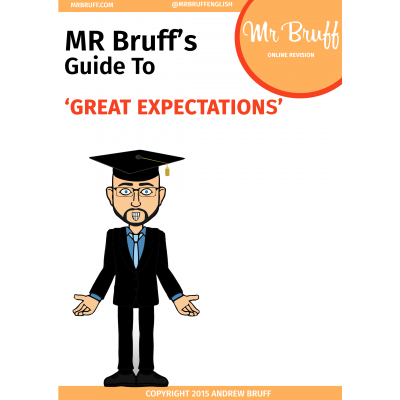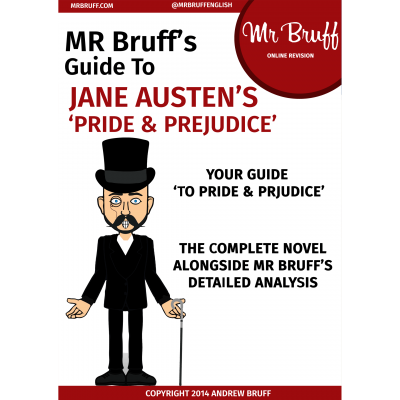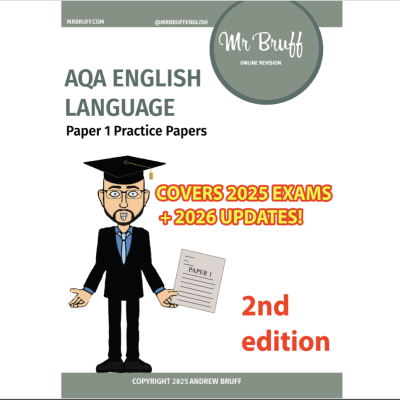Description
Second Edition – GCSE self-study revision guide. Suitable for supplementing a KS3 programme of study.
Year 7 students are starting secondary school with a better knowledge of spelling, punctuation and grammar (or EGPS as it’s been rebranded) than ever before. This lively guide, brimming with fascinating facts and grammar jokes, revises and builds on Key Stage 2 knowledge, providing a pathway through Key Stage 3. It can also be used at Key Stage 4 as a self-study aid or to support a taught programme of revision and consolidation. As well as examining the nuts and bolts of the English language, this guide contains examples from literature to illustrate why writers make grammar choices.
CONTENTS:
Chapter 1: Sentence Functions and Punctuation Basics
Declarative, interrogative, imperative and exclamatory sentences. Capital letter, full stop, question mark, exclamation mark.
Chapter 2: The Active and Passive Voice
Subject, verb, object
Chapter 3: Nouns
Irregular spellings and plurals. Concrete, abstract, proper and collective nouns. Compound nouns. Noun phrases
Summary. Common mistakes with articles. Less/fewer. Amount/number
Chapter 5: Interjections
Summary. Punctuation with interjections
Chapter 6: Verbs
Main, auxiliary, modal. Subject and verb agreement. Tenses. Spelling of past and present participles. Irregular verbs. Split infinitive. Double negative. Verb phrases
Chapter 7: Verb Phrases in Tenses and the Conditionals: Quick Reference
Summary of the tenses. Summary of the conditionals
Chapter 8: Pronouns
How pronouns can improve your writing. Relative pronouns. Non-defining and defining (identifying) clauses with relative pronouns. Reflexive pronouns
Chapter 9: Adjectives
Commas in lists. Compound adjectives. Adjective (or adjectival) phrases. Comparative and superlative adjectives
Chapter 10: Prepositions
Types of preposition. American and British English prepositions. Prepositional phrases. Difference between a noun phrase and a prepositional phrase
Chapter 11: Adverbs
What’s an adverb? Spelling rules. Adverbs and adjectives. Comparative and superlative adverbs. Adverbial phrases. Difference between adverbial phrase and prepositional phrase
Chapter 12: Simple Sentences
How to make a simple sentence. Why do I need to know about them?
Chapter 13: Minor Sentences
How to make a minor sentence. Why do I need to know about them?
Chapter 14: Compound sentences
How to make a compound sentence. Coordinating conjunctions. Why do I need to know about them? Compound sentences with semicolons. Compound sentences with semicolons and transition words (conjunctive adverbs). Compound sentences with colons. Co-ordinating conjunctions in literature
Chapter 15: Complex Sentences
What’s a complex sentence? Subordinating clauses with (1) non-finite verb; (2) relative pronoun + finite verb; (3) subordinating conjunction + finite verb. Revision: identifying and non-identifying embedded subordinate clauses. Complex sentences in literature
Chapter 16: Multi-clause Sentences
Chapter 17: Compound-Complex Sentences
Chapter 18: Paired (or Correlative) Conjunctions
Chapter 19: Common Mistakes with sentences
Runaway sentences, spliced commas, Oxford comma
Chapter 20: Paragraphs, Advanced Paragraphing Skills, Discourse Markers
Indenting and blocking paragraphs, structuring a paragraph, advanced paragraphing skills, discourse markers
Chapter 21: Homophones, Spelling Rules and Common Mistakes
What are homophones? Commonly confused homophones. Useful spelling rules
Chapter 22: Prefixes and Suffixes
Commonly confused prefixes and suffixes
Chapter 23: Punctuation (I)
Revision of the comma & other uses of the comma. Apostrophe of omission. Apostrophe of possession. It’s and its. Apostrophe with time and quantity. Brackets. Hyphen. Dash. Ellipsis
Chapter 24: Punctuation (II)
Speech marks, quoting speech, quotation marks for quoting, other uses of quotation marks, asterisk, colon, semicolon
Chapter 25: Rhetorical Devices
The Basics: CREEP RRR. Counterargument. Rhetorical question. Emotive language. Exaggeration. Pronouns. Rule of three. Repetition. Reflection. How to structure a good speech
BONUS CHAPTER! Stretch and Challenge Rhetorical Devices
Types of humour (verbal irony, situational irony, dramatic irony, satire, parody). Anaphora. Anadiplosis. Antithesis. Asyndeton. Chiasmus. Epistrophe. Parallelism. Polysyndeton. Tricolon
